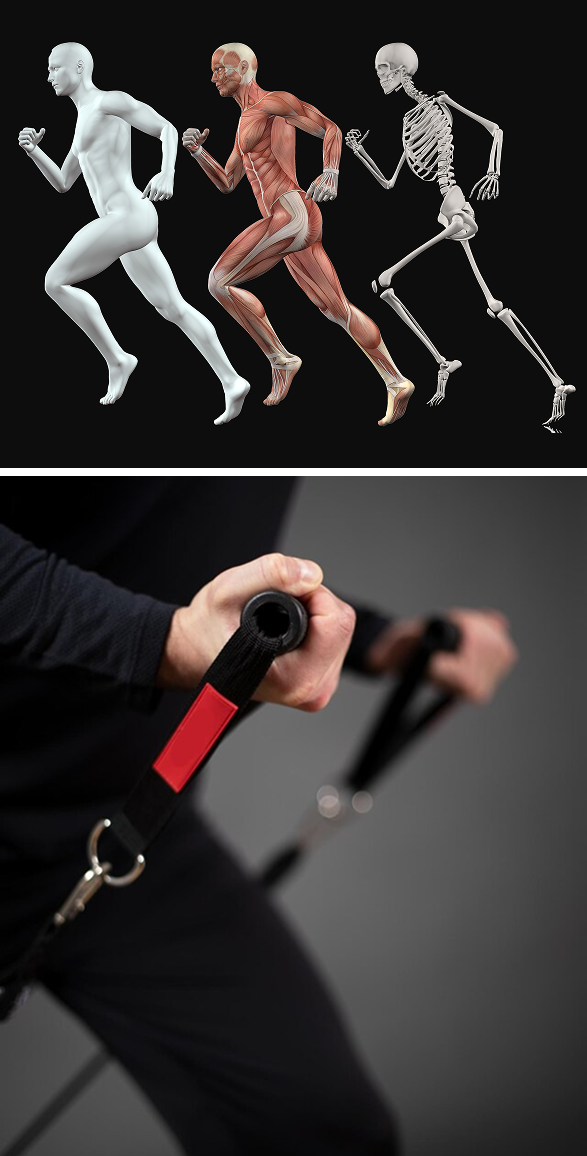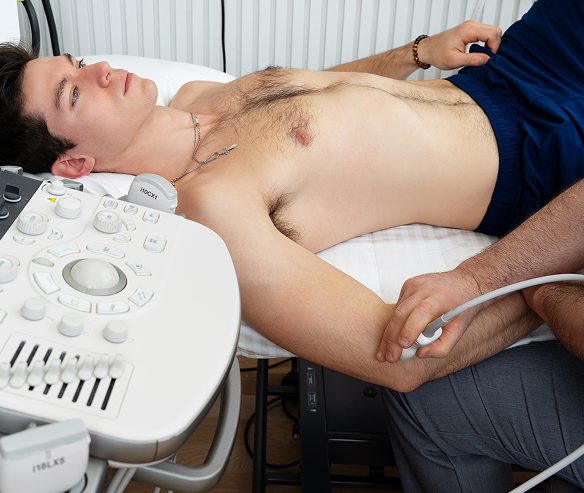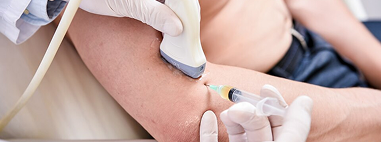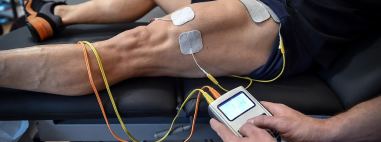For many adults, the carefree days of running, jumping and climbing without pain or restriction are distant childhood memories. Even adults who exercise religiously combat pain, stiffness, and overuse injuries, chalking it up as a normal part of aging. But aches and pains are not “normal” at any age – they arise from tissues that have lost their functional properties due to overuse, misuse and disuse.
Functional patterns training is a methodology designed to restore the fundamental properties of the body’s soft tissues, and retrain the body to move in functional mechanical patterns that eliminate pain and stiffness, and optimize performance.
Dr. Lev Kalika is clinical director of NYDNRehab, Manhattan’s top-rated physical rehabilitation clinic in NYC. Dr. Kalika is more than a clinical practitioner – he is a dedicated researcher who received training from some of the world’s most eminent pioneers in integrative medicine. Dr. Kalika has dedicated his life’s work to finding innovative solutions for pain syndromes, movement disorders and injury rehab.
Dr. Kalika is leading the charge in the growing trend toward holistic integrative medicine. Conventional medicine’s reductionist and drug-based approach to patient care has failed for decades to improve the health of patients, all too often worsening their condition. Consequently, a growing number of people are looking for holistic alternatives that successfully restore their health and mobility.
In his quest to provide superior solutions, Dr. Kalika has ventured into new frontiers, embracing advanced technologies, innovative methodologies and regenerative therapies. His 20+ years of experience and his commitment to professional development make NYDNRehab the clinic of choice in NYC for patients who want fast and enduring results.
At first glance, the human body appears to be symmetrical, but when we look beneath the surface, we see that this is not the case. The tissues and organs are arranged asymmetrically, and most people have a dominant side, with preferred movement patterns favoring one side over the other. Over time, we develop inefficient movement patterns that cause imbalances and undermine optimal body mechanics.
Young children are able to move with ease because their tissues are not yet fully formed, and their bones have not yet ossified. High levels of growth hormones are surging through their young bodies, building and repairing tissues around the clock. Their muscles and fascia are smooth and elastic, and their ligaments are strong and pliable.
Growth hormone (GH) is secreted by the pituitary gland, driving physical development from conception onward. GH levels reach their peak during puberty, then decline slightly and remain stable throughout the teens to early 20s. At about the age of 25, when the body reaches developmental maturity, growth hormone levels begin to drop steadily at the rate of about 1-2% per year, leveling off again in your 50s.
By the time you reach middle age, your body’s ability to quickly repair itself diminishes, and you begin to see changes in muscle mass, bone density and metabolism. Bouncing back from physical activity takes longer, and you begin to experience pain and stiffness. At the same time, the responsibilities of adulthood take their toll, reducing your overall physical activity level and keeping you in a seated position for hours on end.


The human body is uniquely designed to walk, run, carry and throw – capabilities that distinguish us from other species. Functional Patterns Training focuses on aligning human movement with the body’s inherent mechanical design. It aims to improve posture, enhance mobility, and promote overall function, thereby eliminating pain and stiffness. Its core tenet is to train the body to move in harmony with its biological architecture.
Functional Patterns Training addresses the root causes of movement dysfunction, such as poor posture and imbalanced muscle tension. Its phases include myofascial release, corrective stretching, and dynamic exercises designed to improve posture, create resilience and prioritize movement efficiency.
Benefits of Functional Patterns Training include:
The Functional Patterns approach prioritizes movement quality over force production, to reduce joint overload and enhance functional range of motion. It offers something for everyone – from elite athletes who want to enhance performance, to middle-agers looking to rejuvenate, to older adults who want to maintain independence and a high quality of life.

Thanks to technological advancements in the 21st Century, human activity levels rapidly devolved from the fitness craze of the 80’s, 90s, and early-2000s, to widespread sedentary lifestyles. From young children to aging grandparents, electronic devices have captivated us all, with devastating consequences for human health.
Once the domain of office workers and long-haul truck drivers, long hours spent in a seated posture has become the norm across all walks of life. Sitting for hours with hips and knees at 90 degrees creates muscle imbalances throughout your body.
One study involving older adults found that hours spent sitting strongly correlated with increased risk of sarcopenia (muscle wasting), poor muscle function, impaired gait, poor balance, and limited ability to transfer from sitting to standing. And it’s no secret that our sedentary lifestyles correlate strongly with rising rates of obesity and poor health.

Functional Patterns Training provides a system for reversing the damage done by physical trauma, repetitive overuse, and sedentary living. The system can be adapted to your current fitness level, and personalized to match your specific needs. Functional Patterns prioritizes movement quality over quantity, with the goal of restoring pain-free functional mobility.

Dr. Kalika is a recognized expert in ultrasound diagnosis, with multiple research publications to his credit. Ultrasound gives us dynamic images in real time, enabling us to explore the body’s structures to identify densified fascia, entrapped nerves and blood vessels, poorly healed injuries, and other factors that cause pain and inhibit mobility.
Our research-grade ultrasound equipment gives us capabilities for sonoelastography, an invaluable tool for assessing tendon and fascia stiffness, and superb microvascular imaging, to detect early signs of healing in treated tissues. Your ultrasound exam takes place on-site in our office, on your very first visit.
ForceFrame is a comprehensive system for accurately testing and training isometric strength in various muscle groups throughout the body. Most people – especially physically active people – develop muscle imbalances and compensation patterns over time that reduce movement efficiency. ForceFrame lets us test individual muscle groups on both sides of the body for strength and symmetry.
The results of each test appear as objective data on a screen in real time, helping us to identify muscle imbalances, asymmetrical muscle strength, inefficient muscle firing patterns, and compensation patterns developed from past injuries. The results of your ForceFrame assessment help us to customize your Functional Patterns Training protocol.
Your walking gait speaks volumes about your body mechanics. Our high-tech motion analysis lab features the most advanced technologies available for assessing joint kinetics and kinematics, weight distribution, detailed information about your pace and stride, and other critical data that gives us insight into your personal biomechanics. Our proprietary software analyzes your collected data and delivers a 17-page report detailing your results.
ShowMotion is similar to gait analysis, but for the neck, shoulder and scapular region. ShowMotion uses motion tracking sensors, placed on the patient’s skin to collect data about movement quality. The patient performs a series of joint-specific movements, and the data is analyzed by ShowMotion’s proprietary software and displayed on a computer screen. The collected information provides valuable insights about inefficient movement patterns, compensation patterns, and improvements in movement in response to therapy. This cutting-edge technology can play a key role in postural restoration and athletic performance enhancement.
At NYDNRehab, we offer a broad range of advanced therapies and technologies that complement Functional Patterns Training. Our holistic approach aims to provide each patient with a personalized experience that culminates in enhanced mobility and stability. Your customized treatment protocol may include some or all of the following.

Shockwaves deliver high-frequency acoustic waves to damaged tissues, stimulating a regenerative response that draws growth factors and stem cells to the treatment site. Ultrasound guidance ensures that we precisely reach the targeted tissues with the best mode, depth and frequency of shockwaves, for specific tissue types. Shockwave therapy can dramatically accelerate healing and help to restore the functional properties of myofascial tissues, to prepare you for Functional Patterns Training.

The Stecco method of fascial manipulation is a hands-on therapy that helps to break up fascial densifications and adhesions, and restore the elastic and gliding properties of damaged fascia tissue. By applying targeted pressure, the Stecco technique generates heat and mechanical force to restore fluidity and improve tissue gliding.

During the hydrodissection procedure, a saline solution is injected into densified fascia under ultrasound guidance. The solution works by separating fascial layers and freeing up entrapped nerves and blood vessels. Our associate, Dr. Uri Brosnol, works with Dr. Kalika to provide orthobiologic procedures and injection therapies.

Myofascial trigger points often contribute to musculoskeletal pain and dysfunction. The dry needling procedure inserts filament-thin non-medicated needles into trigger points to evoke a twitch response, relaxing contracted fibers and immediately relieving pain. Ultrasound guidance eliminates the need for multiple insertions, reducing discomfort for the patient.

SM neuromuscular electrical stimulation (NMES) dynamically interacts with the patient during therapeutic exercises, providing real-time sensory, auditory and visual feedback. This breakthrough technology helps patients to recalibrate muscle actions, to optimize joint function. SMNMES has helped numerous patients to avoid unnecessary shoulder, knee and ankle surgeries, even in complex scenarios.